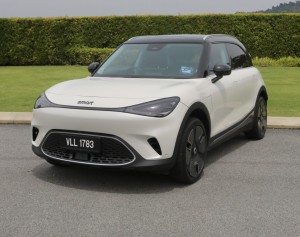Driveable smartphones: How operating systems are taking over our cars
By DPA | 17 December 2024
BERLIN: Everyone can name an operating system from a computer or smartphone - but what about a car? Few of us realise that we’ve technically been driving with them since the first electronic control units (ECUs) in the early 1970s.
More comfort and safety functions then led to more and more control units. Since the introduction of the so-called CAN (Controller Area Network) bus system in the early 1990s, control units can be networked with each other.
At that time, the Mercedes S-Class W140 was the first car with a CAN bus system. Today, compact cars have between 30 and 50 networked computers and luxury class vehicles typically have between 70 and 100.
One bus to connect them all
Toralf Trautmann, a physicist and professor of automotive mechatronics at the University of Applied Sciences in Dresden, explained the advantages of connected systems: "Additional features can be easily integrated, which allows a wide range of variants and possible combinations."
Manufacturers are increasingly relying on digital ecosystems and cooperative ventures to offer additional services such as keyless entry, remote diagnostics and battery preheating for electric cars.
Car makers often don’t create the software themselves.
Volvo and Polestar were among the first manufacturers to adapt Google's Android Automotive software for their vehicles' infotainment systems and Mercedes vehicles in Europe and North America will navigate with Google Maps in the future.
Combined with the car's driving data, that will bring precise range management for electric vehicles, said Mercedes-Benz chief software developer Magnus Östberg.
How do these collaborations come about?
"Developing a sophisticated entertainment system is very expensive," explains Peter Fintl, head of technology and innovation at technology consultancy Capgemini Engineering.
"It costs at least a mid-double-digit million amount, but can quickly reach triple digits."
Automakers have learned that "they're better off buying in various functions than developing them themselves."
Simpler architecture, faster updates
The shift to operating systems is expected to simplify the electronics architecture of vehicles and speed up development cycles.
Digital applications will work faster, use less power, and be safer and easier to keep up to date.
This is particularly important for assistance systems and automated driving.
A uniform programming language for the new chips facilitates updates using the cars' internet connection in what is known as over-the-air updates (OTA).
In the case of the Mercedes-Benz operating system MB.OS, four OTA-capable central computers connected using Ethernet are replacing the 100 or more control units that were previously common.
MB.OS is designed to reduce development and production costs and enable new, networked assistance systems. As with Tesla and BMW, the Linux operating system serves as the basis for MB.OS, which is to be integrated into a new vehicle platform in two years.
"While complexity is not decreasing, the amount of hardware required is. The weight of the control units and cables used is falling, as are the costs of assembly in production," said Professor Trautmann.
In addition, the data transmission time is reduced and the latency between the control units is eliminated. This is important in automated driving, where every millisecond of reaction time counts.
As easy as updating your smartphone
"The trend is toward fewer ECUs with multiple integrated processors that are more powerful," Trautmann says.
"Safety is the top priority for European manufacturers when it comes to new functions, so development takes a long time."
However, collaborations should speed up the process.
Operating systems are enabling manufacturers to rethink the car.
Digital functions are just as important as the powertrain or driving data, says Mercedes-Benz's Östberg. "Customers demand a similar digital benefit in the car as they do from a smartphone.”
"In the future, this will make it possible to load new apps for comfort functions as well as update the software for driving systems, just like with a smartphone," said Fintl.
Tags
Autos News
Reviews

7.9
Xpeng G6 580 Pro: Fresh and fluidic

Guangzhou adventures: Zontes 368 scooter and 703 Adventure m...

Zontes motorcycle factory in Jiangmen: Running on a fast tra...

7.6
Maserati GranTurismo (Mk2) Modena: Sharp and smooth operator

6.8
Triumph Tiger 900 GT Pro: Multi-talented adventurer

Hyundai Ioniq 5 N: Born rascal

6.6
Husqvarna Svartpilen 401: Inspiring retro design

8.8
smart #1 (Premium): Agile, engaging, roomy, premium motoring
Videos

StarCarSifu Editors' Choice Awards 2024: Top winners

The Snowball – Lamborghini’s Heartwarming Christmas Story of...

EVOGO battery swapping solution showcased at IAA Mobility 20...
